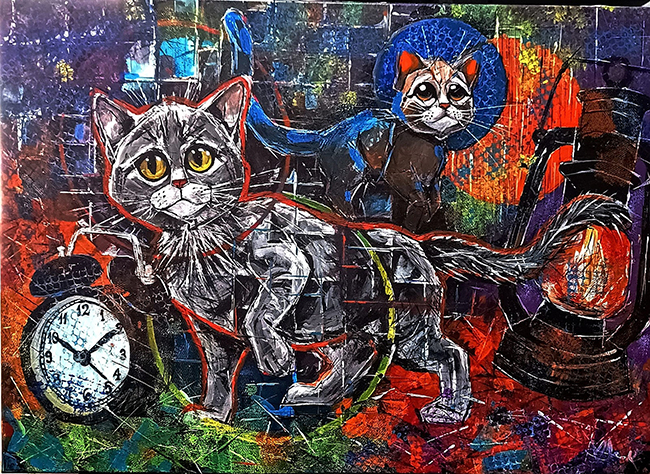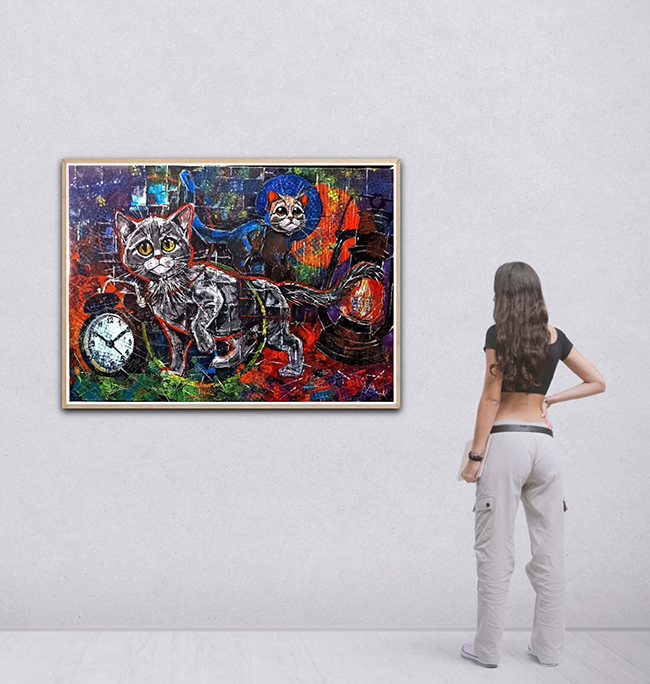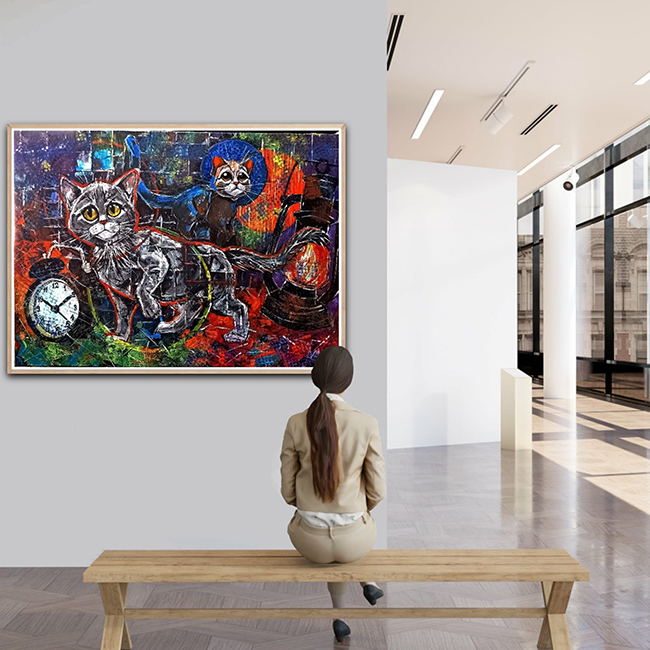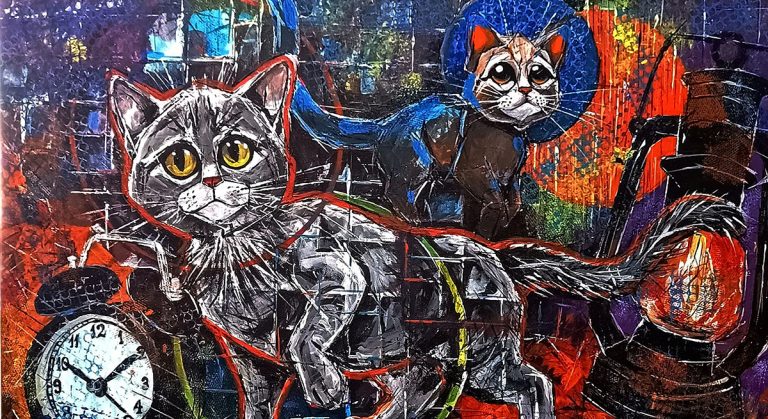Albert Deak’s work doesn’t whisper—it leans in and speaks directly, in colors and symbols that bypass logic and go straight to the gut. Born and trained in Eastern Europe, Deak began as a ceramicist in 1989, graduating from a respected University of Art and Design. That was just the start. Over the years, he’s pushed his practice across media—into painting, graphics, and digital art—while holding onto one thing: authenticity. Deak’s influences include Pollock, Kandinsky, and Richter, but he’s never tried to mimic. His art is deeply personal, often abstract, and always grounded in something felt rather than just seen.

One of his newest works, The Enigma of the Cat and the Clock of Existence, pulls us into a world shaped by quantum theory and personal meaning. It’s a painting that challenges the viewer not only to look but to participate—to become part of what it’s trying to reveal.

“The Enigma of the Cat and the Clock of Existence”
Acrylic on Canvas, A1 Size, May 31, 2025
This isn’t just a painting—it’s a thought experiment turned inside out. Inspired by Schrödinger’s famous cat paradox, Deak turns a science problem into a visual and emotional puzzle.
At first glance, we see three main elements: a cat, a clock, and a lantern. Each one is symbolic, each one carries weight. The cat is painted in two forms—one bold and defined, the other more ghostlike. It’s Deak’s way of expressing dual realities, the idea that something can be both here and not-here at the same time. The cat is alive, dead, real, imagined—all depending on who’s watching and when.
The viewer, then, isn’t on the outside. You’re part of this. Your attention—your interpretation—activates the image. This reflects quantum theory’s central idea: observation affects outcome. Deak turns this into art. As you look, the painting changes. Or maybe you do.
The clock floats—not ticking away hours, but hinting at time as something slippery and nonlinear. It doesn’t feel anchored. Deak paints it as if it exists in all tenses at once: past, present, future. Time here isn’t a line, it’s a loop, or maybe a field. The cat exists inside that field, not pinned to a single moment.
Then there’s the lantern. Unlike the other elements, it provides direction—literal light. But it’s not just illumination in the visual sense. It’s a moment of realization. The lantern is revelation. In some interpretations, it can be seen as representing consciousness itself: the flash of awareness that brings form out of chaos.

Stylistically, the painting combines abstraction with figuration. It has roots in expressionism but doesn’t stay there. The brushwork is loose and quick, suggesting motion, energy, instability. The background shifts in deep blues and purples, evoking space or some kind of metaphysical void. The red that appears in the foreground—especially around the cat—pulses with urgency. Red here feels like a call to attention. It’s the part of the painting that wants to be seen first.
There’s a deliberate balance in the composition. The figures aren’t just thrown on canvas. They’re placed with care, so the eye moves around naturally—from cat, to clock, to lantern, and back again. The movement becomes a cycle, echoing the painting’s core message about existence being circular or variable, not fixed.
What’s most compelling about this work isn’t just its concept, though. It’s how Deak ties it back to feeling. You don’t need to understand quantum mechanics to feel the uncertainty, the beauty, the slight unease. The painting does what good abstract art often does: it makes you feel something before you know what it is.
Deak’s choice of acrylic lets him layer quickly and play with texture. Some parts of the canvas are dense, built up. Others are almost translucent. That contrast mirrors the theme: what’s visible, what’s hidden, what’s waiting to be brought into focus.
This piece doesn’t offer answers. It doesn’t want to. Instead, it asks good questions—about what’s real, about the role of the viewer, about how much of the world is shaped by our gaze. Deak seems less interested in presenting a tidy narrative and more invested in creating a space where meaning stays fluid.
In a time when clarity is often overvalued, Deak reminds us that mystery can be a virtue. The Enigma of the Cat and the Clock of Existence is a meditation disguised as a painting. It doesn’t resolve, it loops. And that’s the point.


